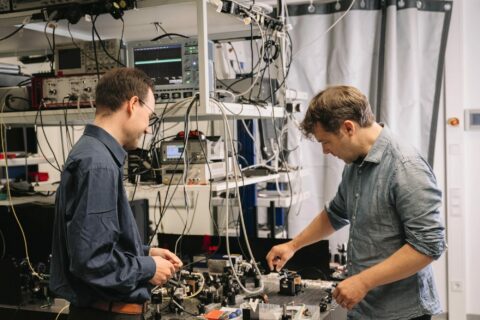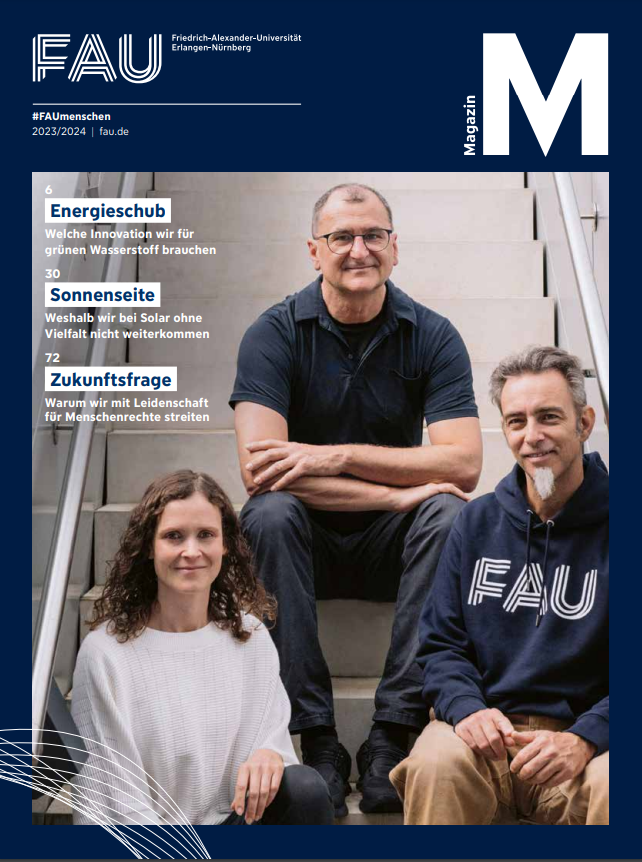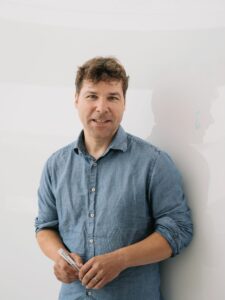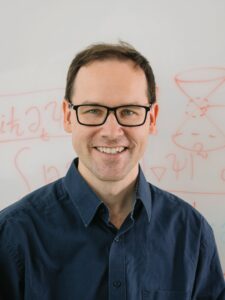Making the most of light

Going beyond the dimensions of data transmission with quantum technologies
How much information can pass through a fiber optic cable? Christoph and Florian Marquardt want to go beyond the current dimensions of data transmission – with quantum technologies.
The fact that light is not merely light or dark to Christoph Marquardt is quite logical – he is a physicist after all. To him, light is more than a wave with frequency and amplitude. “I try and find out the dimensions of light by observing it from a quantum-optical perspective,” says the Professor of Quantum Technology at FAU and head of a working group at the Max Planck Institute for the Science of Light (MPL).
Marquardt carries out fundamental research, but with a clear focus on practical applications: He is searching for the optimum for the transfer of information. Optimum in this case does not mean maximum packing, but rather a combination of data density, low energy consumption and the ability to use existing infrastructure. “A deep sea cable is not replaced because the transfer technology has changed,” he says.
Higher information density with quantum states
Information is currently coded in light waves and these waves can vary, they can be short or long or have small or large amplitudes. And that is just the first step: Several waves can be transmitted through a fiber optic cable where their axes are rotated in opposite directions. “However, at some point, the limits of this method are also reached,” explains Christoph Marquardt. Molecules are overstretched, there are wave mixing effects and noise caused by amplifying processes.” This results in the need for increasingly refined and complex processes to correct transmission errors.
The objective has already been defined: The information density should increase but the number of photons should not. And this is where quantum states come in. “We are performing research, for example, on devices that initially only measure a small proportion of the quantum state and then modify themselves in such a way that they can optimally determine all quantum parameters. This means we can gain more information from the same energy,” explains Marquardt. Because the data also needs to be protected reliably, he is also conducting research into new methods in cryptography. Here too, he uses quantum properties, for example entangled photon pairs. These photon pairs can be used to check whether information has been manipulated or has been lost – a secret key can be generated from the measurement results. “Each time data are accessed, the quantum states change. Monitoring this enables us to detect any unauthorized access.”
Toolbox for AI
Quantum technology also has its limits, however. Christoph Marquardt uses expertise from theoretical physics to try and find out exactly where these limits are. In his case, it is a family matter, since his brother Florian’s office is only a few doors down the hallway from his own. He also studied physics, but in Bayreuth and not in Erlangen like Christoph. “It was very important for me to gain some international experience in Basel and at Yale,” he says. Florian Marquardt came to FAU in 2010 when he was appointed Chair of Theoretical Physics and in 2016 he was appointed Scientific Director at MPL. As head of the Theory Division, he deals with the dynamics of systems, in particular at the interface between nanophysics and quantum optics.
Florian Marquardt is the right person to talk to when it comes to questions such as how to measure light in all its dimensions, why electrons behave strangely at certain temperatures or how quantum optics work in superconducting circuits. At the same time, he also researches into methods in artificial intelligence, for example in order to accelerate the development of quantum computers. “Machine learning and neural networks can also support us with optimizing quantum optic data transfer,” he explains. “This involves the entire process, from coding the information, to reducing losses during transport, and interpreting noisy signals.”
Simulating this process and making significant progress requires not only high computing power, but also a great deal of patience since the program needs to run repeatedly for a large number of times. “This means we can get stuck in something known as a local optimum where the target values simply do not improve,” says Florian Marquardt. “Learning systems are able to detect patterns that lead out of this dead end.” Ideally, physicist Marquardt would like to make the right tools available in a kind of toolbox that the AI can use to develop successful strategies.
by Matthias Münch
FAU Profile Center Light.Matter.Quantum Technologies (FAU LMQ)
Photonics and electronics form the backbone of our current information technology. Light and matter are the key to many new applications and the basis for the new research field of quantum technologies that deals with the manipulation and control of quantum systems. At FAU, research is carried out into fundamental questions where light, matter, and quantum phenomena merge to produce new functionalities. These initiatives are bundled in the Profile Center Light.Matter.Quantum Technologies.
This article is part of the FAU Magazin

A university thrives because of the people who research, study, teach and work there. A university is supported by people who are connected to it as alumni, friends and sponsors and who are committed to promoting its interests all over the world.
They all contribute their unique talents, skills and perspectives. It is this diversity that makes our FAU a place of innovation, a place where many talented individuals tackle the major challenges of our times together, and a place where they keep finding answers.
Read more articles online Download: FAU Magazin (PDF)

